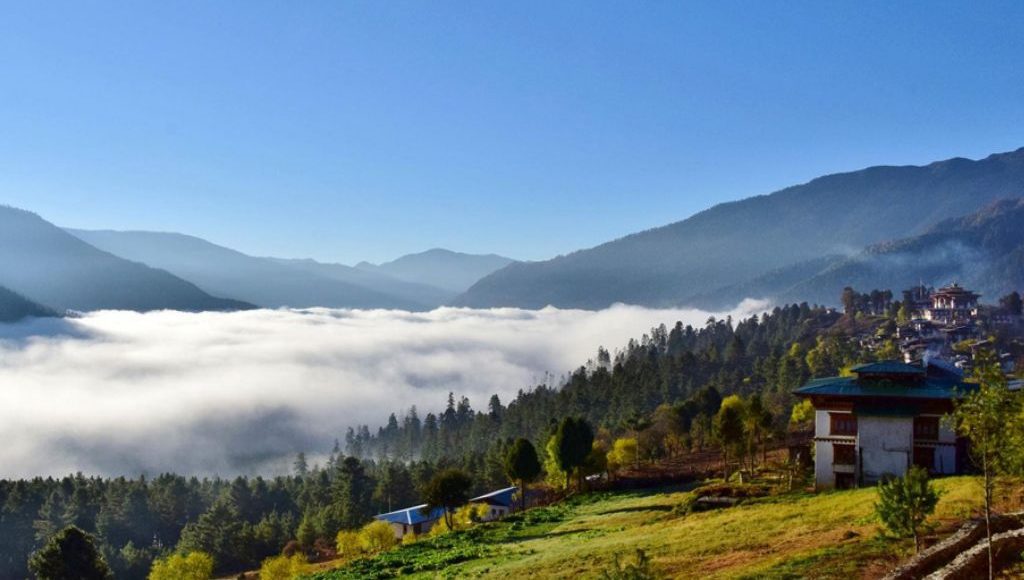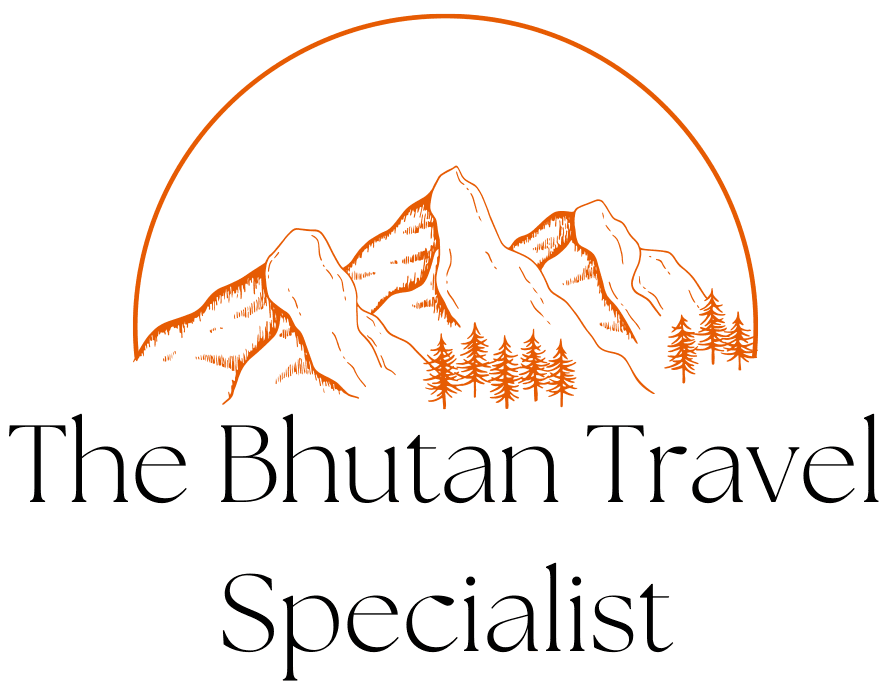Do not hesitate to give us a call. We are an expert team and we are happy to talk to you.
(+975) 17953762

Overview:
Embark on a captivating 8-day Bhutan Culture Tour, unveiling the rich heritage and natural wonders of this enchanting kingdom. Begin in Paro with a visit to the Rinpung Dzong and a scenic drive to Chele La Pass, offering panoramic Himalayan views. Explore Thimphu’s cultural landmarks, including the Folk Heritage Museum and Tashichhodzong. Witness the Wangdue Festival in Punakha and immerse in Bhutanese festivities. Enjoy a village hike, visit Punakha Dzong, and hike to Khamsum Yulley Namgyal Chorten. Return to Paro, visit the iconic Tiger’s Nest Monastery, and experience a traditional hot stone bath. Conclude your journey with fond farewells at Paro International Airport.
Tour Highlights:
1. Explore the Rinpung Dzong in Paro and ascend to Chele La Pass for breathtaking mountain views.
2. Discover Thimphu’s cultural treasures, including the Folk Heritage Museum and Tashichhodzong.
3. Experience the vibrant Wangdue Festival, celebrating Guru Rinpoche, in the picturesque town of Wangdue.
4. Embark on a scenic village hike in Punakha, cross the longest suspension bridge, and visit Khamsum Yulley Namgyal Chorten.
5. Visit Punakha Dzong, hike to Chimi Lhakhang, and traverse the Dochula Pass on the way to Paro.
6. Hike to the iconic Tiger’s Nest Monastery and indulge in a traditional hot stone bath.
7. Enjoy leisure time in Paro and bid farewell to Bhutan with cherished memories.
Note: This itinerary is subject to change based on local conditions and festivals.
Paro International Airport (Google Map)
As you land at Paro International Airport, our warm-hearted representative will be eagerly waiting to welcome you and accompany you to your hotel. If you arrive in the morning, your first stop will be the Rinpung Dzong, a magnificent fortress known as the “fortress of the heap of jewels.” Inside, you’ll be captivated by the intricate wall paintings that depict Buddhist tales, surrounded by the serene wooden galleries. Afterward, we’ll take a leisurely walk downhill, crossing a charming traditional wooden bridge, and reach Paro town. Relax and unwind in Paro for the night.
Today, get ready for an exhilarating drive to Chele La Pass, situated at an impressive altitude of 3990 meters. Adorned with vibrant Buddhist prayer flags, the pass treats you to breathtaking views of the valleys below. As you ascend along the ridges, each one surpassing the previous in height, you’ll be rewarded with awe-inspiring vistas of Mount Jumolhari and Jichu Drake on your right, and even catch a glimpse of Mount Kanchenjunga, the third-highest peak in the world, in the distant left, across the Sikkim region. Reach the highest ridge, Kungkarpo, standing proudly at about 4200 meters, and take in the magnificent panorama of the Himalayas. After savoring the moment, hike back to your vehicle and return to Paro for a comfortable overnight stay at the hotel.
After a delightful breakfast, we’ll embark on a scenic drive to Thimphu, the vibrant capital city. The day’s highlights include visits to the Folk Heritage Museum and the School of Arts and Crafts, where you’ll witness the rich cultural heritage of Bhutan. In the afternoon, we’ll make our way to Kuensel Phodrang, a vantage point overlooking the picturesque Thimphu valley and home to a colossal Buddha statue cast in bronze. As the day draws to a close, we’ll explore the Tashichhodzong, an enchanting medieval fortress-monastery that houses important government offices and the majestic Kings’ Throne Room. In the evening, take a leisurely stroll through the charming streets of Thimphu, immersing yourself in the local way of life. Enjoy a comfortable overnight stay at a hotel in Thimphu.
Today, we’ll drive to Wangdue, passing through the breathtaking Dochula Pass, situated at a lofty altitude of 10,170 feet. On a clear day, the pass treats you to spellbinding vistas of the majestic Himalayas. Take some time to soak in the awe-inspiring scenery before continuing our journey to Wangdue. Immerse yourself in the vibrant atmosphere of the Wangdue Festival, a celebration honoring Guru Rinpoche, the great teacher who introduced Buddhism to Bhutan in the 8th century. Marvel at the festival dances and mingle with the friendly locals, getting a true taste of Bhutanese culture. Later, we’ll proceed to Punakha for a delightful overnight stay at a hotel.
Kickstart your day with a delicious breakfast, followed by a scenic village hike. Cross the longest suspension bridge in Bhutan, enjoying the tranquil ambiance along the banks of the Mo Chu River. Discover a local village and connect with the friendly locals while visiting their traditional farmhouses. Immerse yourself in their warm hospitality as you savor a cup of butter tea. Indulge in a hearty lunch at a local house before embarking on a further hike to Khamsum Yulley Namgyal Chorten, a charming three-story chorten offering mesmerizing views of the Punakha Valley and its snow-capped mountains. Take a moment to soak up the serenity of this idyllic location before returning to the hotel in Punakha, where a comfortable overnight stay awaits.
Today, we’ll visit the magnificent Punakha Dzong, an architectural masterpiece nestled between the Pho Chhu and Mo Chhu rivers. Later, we’ll drive back to Paro via the scenic Dochula Pass once again. Along the way, we’ll make a stop at Lobesa, where you can hike through picturesque rice paddies to reach the Chimi Lhakhang Temple. This temple pays homage to the legendary 14th-century Yogi, Drukpa Kuenley, also known as the “Divine Madman,” who is believed to bless women seeking fertility. As we continue our journey, we’ll savor the beautiful landscapes and spend the night at a comfortable hotel in Paro.
Gear up for an unforgettable adventure as we embark on a hike to the iconic Taktsang Monastery, also known as the Tiger’s Nest. Perched dramatically on a steep cliff, around 900 meters above the Paro Valley, this renowned monastery will leave you in awe of its beauty and tranquility. Enjoy a delicious lunch at the Cafeteria restaurant, nestled amidst the mountains. After exploring the monastery and basking in its spiritual ambiance, we’ll return to Paro. As a perfect conclusion to your Bhutanese experience, we’ll visit a farmhouse for a traditional hot stone bath, allowing you to relax and rejuvenate. Enjoy a comfortable overnight stay at a hotel in Paro.
It’s time to bid farewell to the enchanting land of Bhutan. After a scrumptious breakfast at the hotel, take some leisure time to cherish your final moments in Bhutan. Later, we’ll arrange your transfer to Paro International Airport, ensuring a smooth journey back home. Our hope is that you have created lasting memories and we look forward to welcoming you back to Go Bhutan Tours in the future.
There are 19 languages spoken in Bhutan, but the national language is Dzongkha. English is used throughout Bhutan’s education system, so it is widely used and understood.
Bhutan is a year-round destination. There are four seasons: summer (June to August), autumn (September to November), winter (December to February) and spring (March to May). But because of the range of altitudes in the country, and the influence of the north Indian monsoons, the climate is incredibly varied.
In the south, the humid, subtropical climate is fairly consistent year-round, with temperatures between 15oC and 30oC. Central Bhutan, with its temperate forests, has a more seasonal climate, with warm summers and cool, dry winters. The northern regions are much colder during winter. Because of the high altitude, mountain peaks are snowy year-round and the lower reaches remain cool in summer.
In summer, the Indian monsoon season runs from late June or July to late September, mostly affecting the southern regions. Most farming activities take place in the summer, when crops thrive in verdant landscapes.
Autumn, from late September or early October to late November, follows the rainy season. It is characterised by bright, sunny days and some early snowfall at higher elevations. It’s the season of feasts and festivals as farmers reap the fruits of their work.
From late November until March, the crisp, clear and sunny winter sets in, with frost throughout much of the country and snowfall common above elevations of 3,000 metres. The winter northeast monsoon brings gale-force winds at the highest altitudes through high mountain passes, giving Bhutan the name Drukyul, which means Land of the Thunder Dragon in Dzongkha (Bhutan’s national language).
Bhutan’s generally dry spring starts in early March and lasts until mid-April. It is a botanist’s delight, with nature in full bloom. Summer weather commences in mid-April with occasional showers and continues to late June.
Bhutan’s currency is called ngultrum. It’s 1:1 with Indian rupees.
Three different electrical plugs are used throughout Bhutan: the British plug (three square pins, compatible with type G sockets), the European plug (two round pins, compatible with type C socket) and the Indian plug (three thick round pins, compatible with type D sockets). It’s a good idea to bring adaptors for all three.
For telephone calls, Bhutan’s country code is +975. Make sure you add this to the beginning of any number if calling Bhutan from abroad.
You can apply online for a visa by completing this application form, or if you’re travelling with a tour operator, they may apply on your behalf. Read more about the visa here.
Visitors from Bangladesh and the Maldives requiring a visa can apply either online before travelling or in person upon arrival in Bhutan.
There is a one-off fee of US$40 for the processing of your application. This is payable at the same time as your Sustainable Development Fee (SDF), as part of the process of submitting your visa application.
The SDF is USD 100 per night for adults from all countries except for India. Children aged between 6 years and who have not yet turned 12 are eligible to pay USD 50 per night. Children who have not yet turned 6 years old do not have to pay any SDF.
The SDF for Indian nationals (showing a valid Indian passport or Voter ID card) is Nu. 1,200 (or the equivalent amount in Indian rupees) per person, per night. Children aged between 6 years and who have not yet turned 12 are eligible to pay Nu./INR 600 per night. Children who have not yet turned 6 years old do not have to pay any SDF.
Tourists visiting Samtse, Phuentsholing, Gelephu, and Samdrupjongkhar towns for 24 hours need not pay Sustainable Development Fee (SDF) beginning April 14, 2023. The waiver will be enforced for a year. The SDF waiver will only apply for tourists who do not travel beyond the designated zones of border towns. However, SDF will apply for visitors who travel beyond the designated zone of border towns.
Tourists will be charged SDF if they go beyond Gurung Basti in Samtse, and beyond Rinchending Checkpost in Phuentsholing. The designated zone in Gelephu is at Aipoli Bridge and Pinchinna checkpost in Samdrupjongkhar.
